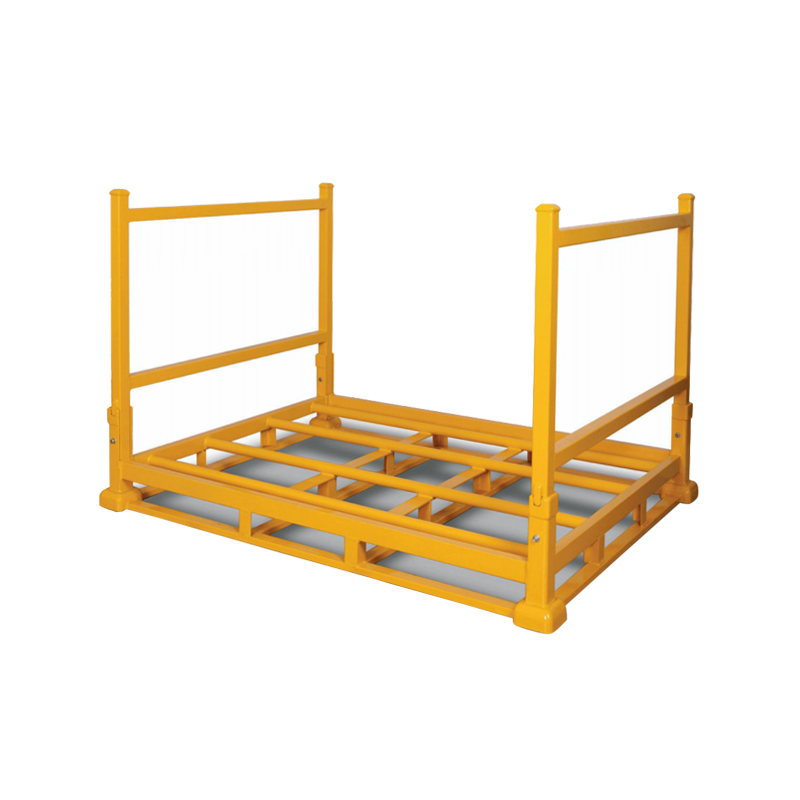When designing or upgrading a storage system—whether in a warehouse, retail backroom, factory, archive, or even a commercial kitchen—understanding the difference between racking and shelving is essential. Though often used interchangeably, these two storage solutions differ significantly in structure, load capacity, purpose, and industry application. Choosing the right system impacts not only space utilization but also safety, accessibility, and operational efficiency.
1. Structural Differences
Racking:
Racking systems are engineered for heavy-duty storage. They consist of upright frames and horizontal beams designed to hold pallets or large, heavy items. Most racking systems require forklifts or material-handling equipment to access the stored goods.
Components: Uprights, beams, wire decking, pallet supports
Material: Typically made from high-strength steel
Configuration: Adjustable beam levels, often modular or expandable
Design Consideration: Optimized for vertical space utilization and high-density storage
Shelving:
Shelving units are designed for lighter-duty storage that can be accessed manually. They usually consist of vertical posts and horizontal shelves, making them ideal for smaller items, boxes, tools, and documents.
Components: Posts, shelf panels, back and side braces (optional)
Material: Steel, wood, plastic, or a combination
Configuration: Freestanding or wall-mounted, often adjustable
Design Consideration: Prioritizes accessibility and ease of organization over load-bearing capacity

2. Load Capacity and Item Size
Racking systems are suitable for loads ranging from hundreds to thousands of kilograms per level. These systems are ideal for palletized goods, industrial parts, large inventory, or bulk items.
Shelving systems generally support lighter loads (usually under 300 kg per level). They are better suited for SKUs stored in bins, cartons, or directly on the shelf.
3. Access and Handling
Racking typically requires mechanical assistance—such as forklifts, pallet jacks, or automated retrieval systems—especially in high-bay configurations.
Shelving is designed for hand picking, making it the preferred choice for settings where individual item access is frequent, such as retail, order picking, or maintenance rooms.
4. Applications by Industry
Industry Racking Use Cases Shelving Use Cases
Warehousing Pallet racking for bulk storage Small parts storage in pick zones
Manufacturing Storing raw materials, heavy components Maintenance parts and tools
Retail (Back-End) High-density backroom storage Quick-access shelves for fast-moving goods
Automotive Engine and tire storage Spare parts and consumables
Archival/Document Heavy-duty archive racks for boxes File shelving and document storage
Food & Beverage Cold storage racking (stainless or galvanized) Lightweight ingredient or utensil shelves
5. Types of Racking vs. Shelving
Common Racking Types:
Selective Pallet Racking
Drive-In / Drive-Through Racking
Push-Back Racking
Cantilever Racking (for long items)
Pallet Flow Racking
Common Shelving Types:
Boltless (Rivet) Shelving
Steel Shelving (Clip or Nut & Bolt)
Wire Shelving
Mobile Shelving
Bin Shelving
6. Space and Layout Considerations
Racking systems maximize vertical space. They're commonly used in high-bay storage facilities and environments where inventory turnover is slower or happens in bulk.
Shelving systems are more compact and accessible, making them well-suited for environments where space is tight or where stock movement is frequent and varied.
7. Cost and Installation
Racking requires more robust materials and professional installation. It’s generally more expensive upfront, especially when including handling equipment.
Shelving is more affordable, easier to install, and often more flexible. It can be adjusted or relocated without specialized labor or tools.
8. Safety and Compliance
Racking systems must comply with load ratings, seismic codes, and industry regulations. Improperly loaded racks can pose serious hazards.
Shelving units are generally lower risk but should still be anchored or braced in high-traffic or seismic areas, especially when loaded at height.
9. Customization and Modularity
Racking can be customized with accessories like column protectors, wire mesh decking, flow tracks, and safety bars.
Shelving offers modularity through dividers, bins, label holders, and mobile bases for increased functionality.
10. Choosing the Right System
Criteria Choose Racking If... Choose Shelving If...
Load Weight Items exceed 300 kg or are palletized Items are hand-loadable and lighter
Access Requirements Mechanical handling is standard Frequent manual picking is needed
Space Constraints Vertical expansion is essential Floor-level or mobile storage is preferred
Budget Considerations Long-term ROI justifies initial cost Budget and simplicity are priorities
Storage Type Bulk, long, or heavy-duty items Small, varied, or high-access items
Final Thoughts
Racking and shelving each serve distinct purposes within storage and logistics operations. While racking is engineered for strength, capacity, and efficiency in bulk storage, shelving prioritizes accessibility, flexibility, and simplicity. Understanding the differences allows facility planners, procurement teams, and operations managers to select the system that best supports their workflow, safety standards, and spatial constraints.
Let me know if you'd like a version tailored to a specific industry (e.g., food processing, pharmaceuticals, e-commerce) or if you want illustrations or tables for your website.
